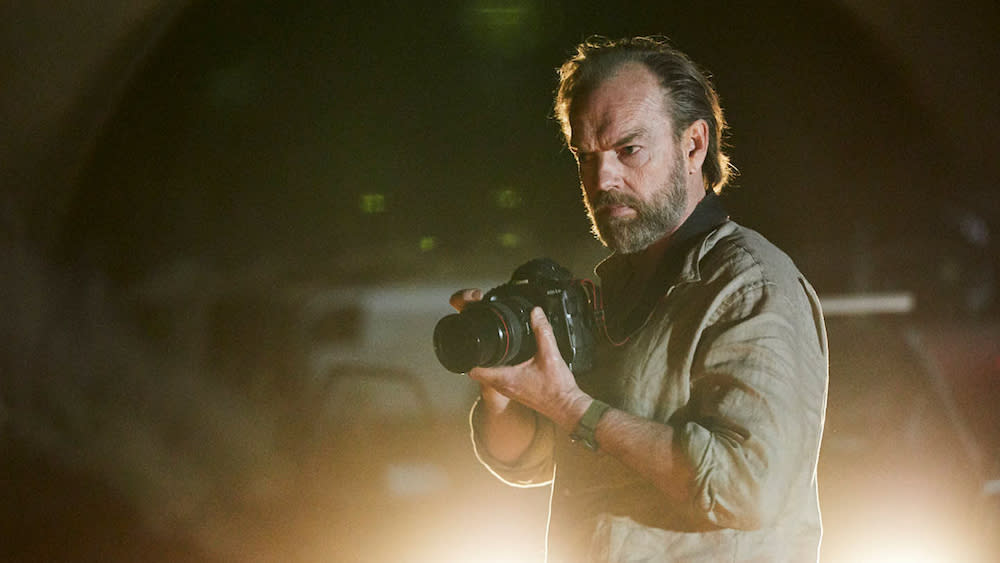Sydney Film Review: ‘Hearts and Bones’

Time spent in a modern war zone can be traumatic for participant and observer alike, yet across continents and cultures, the shared experiences of living and loving in the wake of such experiences can be startlingly similar. This is multi-faceted and overarching theme woven throughout Ben Lawrence’s sensitive and affecting new Australian drama “Hearts and Bones,” an impressive narrative feature debut from the winner of last year’s Sydney Film Festival documentary prize for “Ghosthunter.”
Lawrence’s thoughtful drama also casts an illuminating light on the current hot-button issue of immigrants to Australia and their place in the social fabric, specifically in the Western Sydney suburbs in which it is filmed. The film’s second-place finish in the narrative section of the fest’s audience award (behind Samuel Van Grinsven’s “Sequin in a Blue Room”) suggests it struck a chord with traditionally partisan Aussie audiences, and with proper handling, it’s larger themes will resonate internationally as well.
Related stories
'Parasite' Wins Sydney Film Festival
Sydney Film Review: 'Emu Runner'
Sydney Film Review: 'Palm Beach'
Just back from his latest overseas assignment, acclaimed war photographer Daniel Fisher (Hugo Weaving) is rudely interrupted by a knock on the door during a moment of intimacy with his loving partner, former ballet dancer Josie Avril (Hayley McElhinney). The visitor is Sebastian Amad (newcomer Andrew Luri, outstanding), an immigrant from South Sudan who works in a commercial laundry, drives a cab at night and is happily married to Anishka (Bolude Watson) with a young child and another on the way.
Amad has tracked down Fisher with a concern: The photographer’s new book and upcoming exhibition will include images from a massacre 15 years before in his South Sudanese town of Maridi, during which the refugee lost his first wife, two sons and a daughter. Amad’s partner knows nothing of his previous life, and he wants to keep it that way. Plus, the pictures, and the memories they stir, logically seem to have a deep effect on him.
As it happens, Dan is already ambivalent about the very existence of the show. Adding to his distress are growing physical symptoms of extreme stress from not only his job (glimpsed in a opening sequence) but Josie’s news that she’s with child — after the couple lost their first to a medical condition shortly after birth. To her surprise and his, Dan agrees to show Amad the photos and consider his request, and from this unlikely bond an even more tenuous but oddly synchronous friendship blossoms.
Lawrence’s father is Ray Lawrence, the revered Australian director who short but influential filmography spans just three titles: “Bliss,” “Lantana” and “Jindabyne.” The younger Lawrence remembers discussing films extensively with dad, and the social realist influences of that trio, plus the work of such favorite filmmakers as Ken Loach, Mike Leigh and Michael Winterbottom (not to mention the influence of the younger Lawrence’s social worker mother), are what inform his interests and what resonate as the essence of “Hearts and Bones” (the title comes from a reference to Paul Simon’s 1983 album of the same name, about emotion vs. intellect, that was cut from the film).
Working with writer Beatrix Christian, who adapted “Jindabyne” from Raymond Carver’s short story “So Much Water Close to Home,” Lawrence has fashioned a story that is less about the hidden secrets of the photos — and they are there, both positive and negative — than the mysteries of the friendship between the two men, their relationships with their partners and the way the quartet process the incendiary information. The intuitive selection of the four leads, and their complex, perceptive playing of the material, is a credit to Lawrence’s deft direction of both veteran and non-professional talent.
The racially diverse Western Sydney suburbs are a character in ways not often seen in onscreen depictions of the city, and the harmonious blending of cultures is both a statement of fact and a cautionary warning that it takes patience and tolerance to achieve such a balance — a point driven home deftly as Talking Heads’ “Road to Nowhere” plays over closing images of immigrants in war zones and gruelling transit to what is hoped but never guaranteed to be a better life.
Sign up for Variety’s Newsletter. For the latest news, follow us on Facebook, Twitter, and Instagram.

